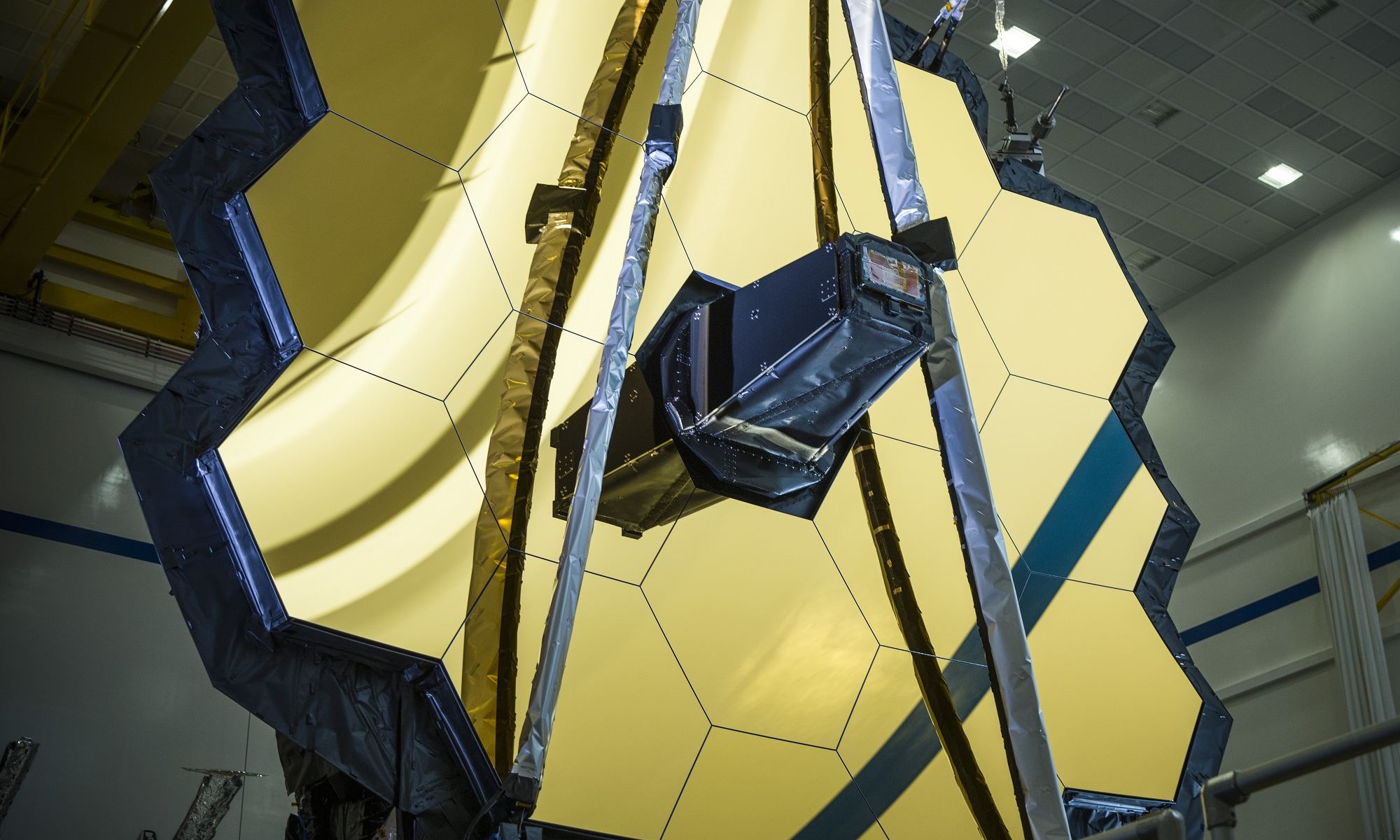In 1996, NASA began working on the James Webb Space Telescope (JWST), a next-generation infrared observatory that would be a total game-changer. And next year, after multiple delays, cost overruns, and exhaustive testing, the observatory will finally take to space. Despite an additional delay forced by the outbreak of COVID-19, NASA recently announced that it is targeting Oct. 31st, 2021, as the launch date.
In other good news, teams at NASA’s Goddard Space Flight Center took advantage of the fact that the JWST is now fully-assembled to conduct the highly-critical software and electrical analysis known as the Comprehensive Systems Test (CST). This was the first time that a full systems-evaluation was conducted on the fully-assembled vehicle, and will help ensure that the JWST will function in space when the time comes!
With the CST test complete, the mission teams at Goddard and Northrop Grumman (the principle manufacturer) now have a baseline of the vehicle’s electrical functional performance. Over the next few months, the observatory will be put through its final series of acoustic and vibrations tests to simulate the stresses it will be put through during launch. Once that is done, the teams will run another full-system analysis.

Engineers will then compare the results of both (which will hopefully be the same) to ensure that the spacecraft is operating as a complete package and can withstand being launched and then operating while in space. As Randy Pollema, the electrical integration and testing lead for Webb at Northrop Grumman, said in a recent NASA press statement:
“I’ve never seen such effort, collaboration and cross-organizational efforts to bring so many different teams and people in so many different areas together to execute a common goal so successfully. We have a lot of pride, and feel a lot of personal reward in what we’ve been able to accomplish over the last year in assembling Webb into its final form, and with the completion of this latest systems evaluation we can confidently move forward knowing that the assembly was a success.”
For an observatory like James Webb, the importance of testing when it comes to software development cannot be overstated. Put simply, the JWST is the largest and most technically-complex space telescope ever built, consisting of many components that have to not only function on their own but as part of an integrated package.
The observatory’s size also means that it has to be folded up in order to fit into the payload fairing (aka. nose cone) that sits atop the Ariane 5 rocket that will send it to space. Once deployed to space, the telescope must then unfold in order to deploy its instruments and begin collecting light. As such, evaluations like this one ensure that all systems are verified and validated ahead of time and communicating with one another properly.

In terms of software, a CST consists of individual units of code being tested as they’re written, then retested when they’re combined into increasingly large software components. Any time a bug is fixed or a featured added, tests need to be rerun to verify that the changed code doesn’t cause errors. All told, the personnel responsible worked 24 hour days for 15 days straight, executing about 1,070 scripts and close to 1,370 procedural steps.
Prior to being fully-assembled, engineers and the mission teams ran performance evaluations using simulations and surrogates, which allowed them to infer data about pieces of the spacecraft. But with the observatory now assembled and all the components working together, simulations are no longer necessary and engineers can assess both its software and electronics directly.
As noted already, the COVID-19 pandemic has disrupted several of NASA’s operations at multiple facilities. However, the administration has addressed this with augmented safety procedures (implemented back in March), which call for reduced personnel working on-site and non-essential team members working remotely.
As of late May, the JWST team resumed near-full shift operations in the cleanroom and have evaluated the impact of the launch date being delayed to March 2021 (which has since been moved forward to October 2021). Once these final steps are passed, the JWST will finally be able to go to space and begin conducting some truly breathtaking astronomical surveys.
The JWST is an international program led by NASA, with partners like the ESA and the Canadian Space Agency (CSA). Over its 10-year mission, it will investigate the enduring mysteries of the cosmos, such as the existence of dark matter, dark energy and the expansion of the cosmos. Its advanced infrared instruments will also allow astronomers to probe back to the beginning of time and see the earliest stars and galaxies in formation.
The JWST will also work in tandem with exoplanet-hunting space telescopes like the Transiting Exoplanet Survey Satellite (TESS). Whereas TESS and other telescopes will detect exoplanets, the JWST will gather spectra to characterize their atmospheres. This will help astronomers to answer the age-old question of whether or not there is life beyond Earth and beyond our Solar System.
Further Reading: NASA

